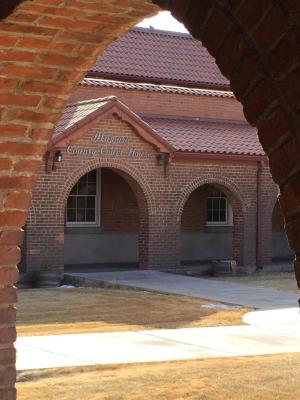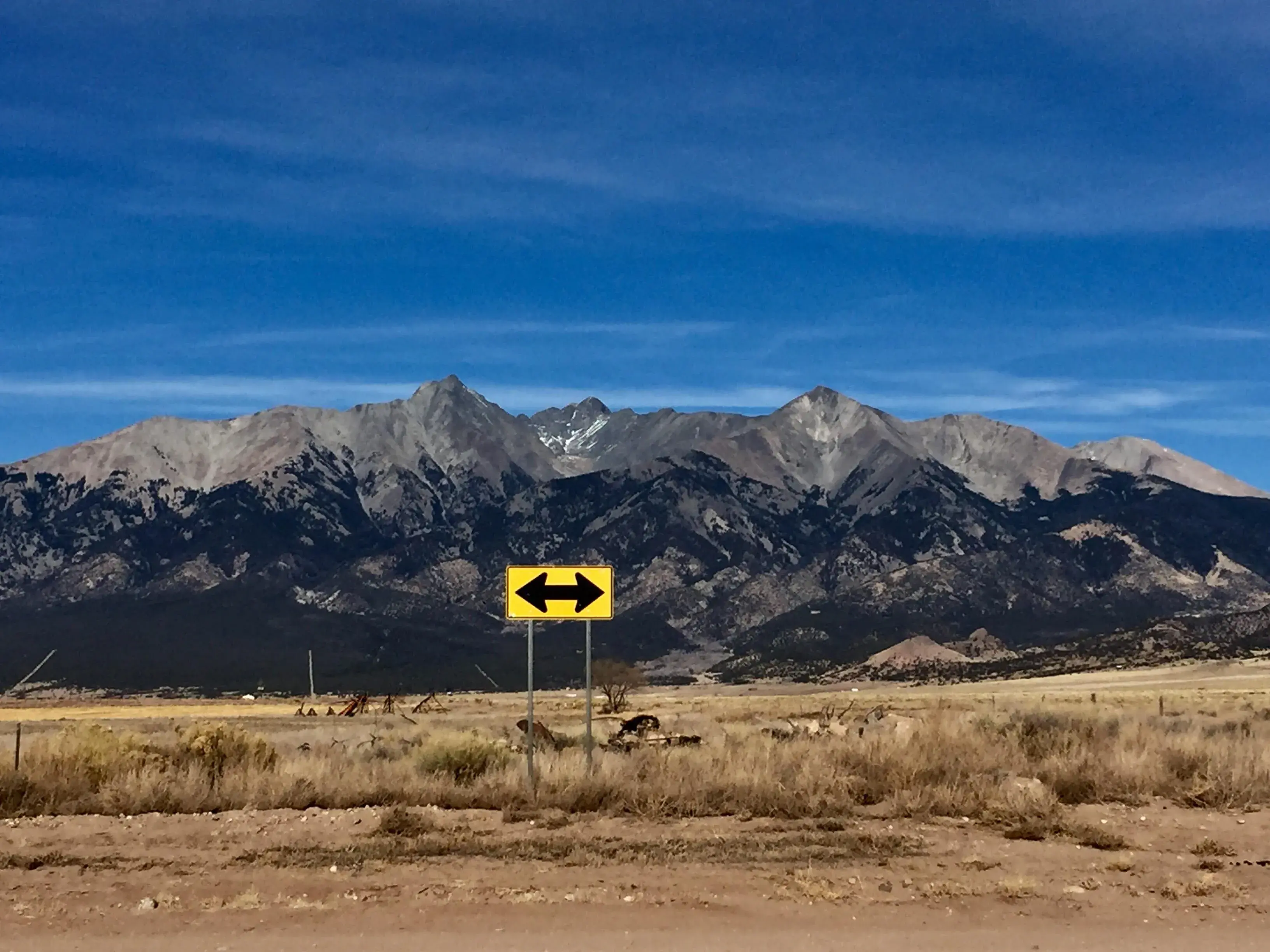Amarah’s Story
There are some topics of conversation that, understandably, leave 15-year-old Amarah staring off into the distance, unable or unwilling to say more than the bare minimum.
Her mother’s addiction problems, for example, so sustained and severe that Amarah and her half-sister saw their toys sold for drug money. And her mother trading relationships for more drugs. And 16 different schools by fourth grade. These are the type of troubles that keep Amarah quiet today.
But there are topics that brighten Amarah’s eyes, and elevate her voice into movie-ready voice-overs. She has created worlds upon worlds, in her mind and in her notebooks, drawing entire casts of anime-style anthropomorphic characters playing out moral crises that she herself couldn’t control in her younger years.

One of Amarah’s worlds is rated “E for Everyone,” she says. It’s populated by cheerfully drawn animals in human clothing, such as Chippie the mischievous chipmunk, and characters with backgrounds reflecting her own life experiences. Lately, she’s also launched a darker “other” world, with violence and, well, reality.
As part of a family severely afflicted by addiction, Amarah is adamant about the need to create and populate both of her imaginary “worlds.”
“I’d say my stories are the conversation of me telling what I’ve been through,” Amarah said.
An Opioid Epidemic Unraveling in the San Luis Valley
The story others wrote for Amarah – that of a child searching for a safe space to grow, learn and play – gets repeated over and over in the San Luis Valley these days. Like other parts of Colorado, from Denver’s urban corridors to the southeast plains, the San Luis Valley has been hit hard by the last decade’s uptick of opioid pill prescriptions and cheap supplies of highly addictive heroin.
There is a strong discourse in the valley that its definition of community, and the livelihood of residents, is now challenged by substance abuse and its accompanying miseries.
“I think it’s fair to say there isn’t a family across this county that has not been impacted, either directly or indirectly, by this epidemic,” said Catherine Salazar, Alamosa County’s director of human services. Salazar then mentions a cousin who died at 35, after prescription drugs followed by street drugs ruined her health.
Elsewhere in Alamosa, the observations are similar: The brother of the office administrator. The daughter of a church friend. A star athlete from a high-income family. Official numbers from various sources throughout the sprawling valley, a four-hour drive from Denver, confirm what the personal stories suggest.
- The six counties that make up the San Luis Valley have the highest rates of drug overdose deaths in the state, with a sharp increase over the past decade.
- Naloxone, an overdose-reversing drug, was used to save at least 15 lives in the valley during the first year of expanded access.[1]
- Costilla County, just southeast of Alamosa, saw enough opioid prescriptions written to amount to one for every resident – of all ages – in the county.[2]
- The number of felony drug cases in Alamosa District Court rose from 88 in 2011 to 336 last year.[3]
- The rate of newborns addicted to opiates rose 83 percent in Colorado from 2010 to 2015, and rose even higher in portions of southern Colorado.
Community leaders like Salazar struggle to avoid distress over the valley’s opioid problem in the face of frequent reminders, including hypodermic needles left in public places and funeral notices for people dying in their 20s and 30s. These leaders are trying to flip the reality of the valley’s isolation on its head: Most people know someone who can find drugs, but they also know someone who can help them on their recovery journey.
The Community Responds
Some of the earliest emergency-response work for the valley’s drug problem was carried out by the San Luis Valley Area Health Education Center (AHEC), a nonprofit that took on leadership in acquiring Naloxone doses and spreading them throughout the 8,000-square-mile basin. Naloxone immediately reverses most opioid overdoses and can now be administered in a simple nasal spray by family, friends and bystanders. Authorities have loosened prescription and distribution restrictions on Naloxone in order to slow overdose deaths across the country.
The San Luis Valley AHEC, led at the time by Freddie Jaquez, started conversations as early as 2011 and 2012, when a pharmacist on the board said his shop was broken into, and home burglaries were on the increase as individuals experiencing substance use issues looked for pills or items to sell for drugs.
“It wasn’t a new problem, but it was new to us,” said Charlotte Ledonne, an RN who is nurse coordinator for the AHEC. She used a 2015 federal rural grant to distribute Naloxone and trained police officers and paramedics on how to use it properly.
From the beginning of distribution in February 2016 until the grant’s end seven months later, overdoses were reversed by the Naloxone 15 times – meaning a total of 15 lives were saved in seven months’ time in the valley alone.
Eric Stevens, who took over the AHEC after Jaquez’s recent retirement, said a number of new initiatives are on the way. A federal grant through the state health department is building a consortium to educate providers about better opioid prescription practices. An AmeriCorps trainer will talk to local high schoolers about substance abuse and safe disposal of leftover prescriptions.
In perhaps the biggest cultural step for the valley, the AHEC led an effort to open a “harm reduction” center in Alamosa in February: A safe location for opioid users who inject to exchange dirty needles for clean ones and learn about recovery programs. Many public health advocates endorse such centers, including one in Denver, as a way to reduce high rates of Hepatitis C and HIV among needle users. By April, Stevens said, the exchange was up and running for a few hours a week, and word was beginning to get around that the service was available. He expected use of the exchange site to build slowly but steadily.
Some of the valley residents most in need of treatment and recovery supports are people in prison. In addition to other efforts underway, Stevens is also pursuing grants and other funding for medically-assisted treatment for opioid users in valley jails. Medically-assisted treatment involves prescribed doses of methadone or buprenorphine (sold under the brand name Suboxone) to replace opioid pills or heroin abuse in a controlled environment. Currently, local jails do not have resources to give out doses, Stevens said, and Medicaid clients lose their coverage once jailed.
“It will take all those efforts and more to successfully combat the opioid crisis,” Ledonne said. “There’s no one magic wand, where we could say, ‘If we had this, we’d be ok.’ ”
On the Judicial Front
Other leaders in the valley are also tackling the courts-and-prison system, where opioid users, like Amarah’s mother, are walled off from society but rarely given treatment, indicating that treatment options are further out of reach for some valley residents than others.
“It’s really over-running our community in many ways,” said James Valenti, deputy state public defender for the Alamosa Regional Office. “So instead of just throwing away the key, we thought drug court could be an alternative.”

The state district court for the region, local prosecutors, public defenders and mental health specialists created a team to take on defendants who showed good intentions to begin their recovery journey.
Valenti will first negotiate with the district attorney for a client facing lower-level drug-related felonies such as car theft, burglary or parole violations. Rather than the usual jail sentence after a guilty plea, the attorneys ask the judge to approve diversion into a treatment team made up of probation, counseling, medical treatment and peer talks.
“We need to keep fighting and pushing for people to get clean,” said Valenti, who noted that drug court agreements require all sides of the legal system to make some compromises. “Because they can get clean.”
Still, the challenge remains daunting. The court recently held a public celebration of the first two “graduates” of the drug court, who are staying clean and counseling others. Sadly, that same morning, Valenti learned a client who had gotten out of jail two days before had died by overdose.
Health Care Services and Supports are on the Rise
Providers like Dr. Barbara Troy, meanwhile, are trying to help families experiencing substance abuse issues at the very start. Troy is an Alamosa-based obstetrician with Valley-Wide Health Systems Inc., a nonprofit clinical provider throughout southern Colorado.
Troy has now seen dozens of women who use opioids during pregnancy, and has seen her share of babies born with opioid withdrawal symptoms or other medical problems caused by the mother’s opioid abuse during pregnancy.
“It’s not just the young people – how did they get started?” Troy said. “It’s a cycle. If they don’t break that cycle, what happens with these babies is that sometimes the grandparents have to raise all of the children that have opiate exposure. It’s a crisis.”
Troy was the first provider to begin medically-assisted treatment with pregnant women, and has helped push for more providers to get the training needed for federal and state approval to prescribe the alternative drugs. There are now two others. Dr. Jack Westfall, director of the High Plains Research Network and associate dean of rural health for the University of Colorado School of Medicine, has grants to train more.
Troy and others continue to see resistance to some substance abuse recovery efforts, whether the always-controversial methadone/Suboxone method or other ideas like harm reduction. “People see it as a moral issue instead of a health issue,” Troy said. “Because it’s a moral issue to them, they think people should get over it by themselves. We work in medicine – we’ve never worked like that. This is health care.”
Children and Family Services and Supports
It’s Catherine Salazar’s job to help pick up the pieces for families that have not yet recovered from opioid abuse. She is a seasoned veteran of the state’s social services system, having been county director in Lake and Las Animas counties before coming back home to take the Alamosa job. Salazar saw the surge in opioid abuse after the economic downturn of 2008.

She feels the rate of abuse may have leveled off some in the last year or two in the valley, based on the number of recent overdose deaths. “It doesn’t mean people have stopped using,” Salazar said grimly. “It means they’ve stopped dying. Naloxone distribution has been huge for the valley and has saved numerous lives.”
From the county’s position as a protector of children, Salazar is shaken by the impact of substance abuse on families. Younger parents leave their children home alone without food or bring them to “flop houses” while they trade their bodies for drugs. Older parents see their adult children steal from their homes or empty bank accounts to buy drugs.
“It crosses all social classes,” Salazar said. “I think that’s what finally got people’s attention, it’s not just the poor anymore.”
But it’s impacting those most in need the hardest – some of those individuals being children. At any given time, Alamosa County has about 70 children in foster care, the great majority stemming from substance abuse issues in the family, Salazar said. Finding new foster homes is a constant challenge, and when the county can’t find enough, it has to pay high rates to private agencies to find more.
Salazar’s office also oversees monetary benefits for families. She calculates that 25 percent of the Temporary Assistance for Needy Families funds the county distributes goes to grandparents taking care of their children’s children.
Like all public officials or medical leaders in the San Luis Valley, Salazar points to the dearth of treatment options as an enormous inequity for local recovery. There are no inpatient treatment beds for individuals experiencing substance abuse anywhere in the valley, requiring long drives to Pueblo or Denver. And that’s assuming people have resources – inpatient treatment costs up to $6,000 a month – and the rate of poverty in Alamosa County alone is 25.6 percent, more than double that of the statewide poverty rate.
The closure of Arapahoe House, a nonprofit substance abuse recovery system in the Denver metro area, reverberates as far away as the valley, Salazar noted. “We’ve been a user of their services. It’s really disheartening to see them close their doors.”
Even high-income families can see all their resources depleted quickly with the high relapse rate in opioid abuse. Patients may recover and relapse four, five or six times before seeing real change. “That can break any family,” Salazar said.
On the Legislative Front
As the San Luis Valley continues to endure a persisting opioid crisis, state leadership in the bigger cities are also trying to organize more resources to combat substance abuse. Health First Colorado, the state Medicaid program, which according to Salazar covers 45 percent of Alamosa County residents, has put new restrictions on opioid prescriptions for new patients, as one example. However, as Eric Stevens mentioned, Medicaid patients lose coverage once placed in jail.
The latest session of the Legislature tackled many more proposed changes related to substance abuse and behavioral health. Bills passed included new limits on first-time opioid prescriptions for certain conditions, expansion of loan-repayment programs to mental and behavioral health professionals in areas with the highest needs, and Medicaid coverage for substance abuse treatments, among others. The Legislature rejected a pilot program for supervised use of injection drugs to reduce overdose risk. The bills that passed are now awaiting Gov. Hickenlooper’s signature.
Amarah’s Courageous Journey
Amarah and her guardian, grandmother Vicki White, are no long waiting around to see if Amarah’s mother can break her cycle of opioid abuse. They have not had contact with her for years, but are most heartbroken that custody losses took Amarah’s beloved younger half-sister away from them, to another state.
They are trying to build their lives in Alamosa, and reach out to others who have been impacted by substance abuse. Vicki works as a care coordinator in the same clinic where Dr. Troy treats patients experiencing substance abuse issues and babies experiencing withdraw symptoms.
Amarah, when she’s not dreaming up more stories and putting her characters on to paper, has helped launch a local nonprofit called Hope For Kids Like Me. Overcoming her inherent reluctance to talk about her family’s past, she speaks to churches and other groups and raises money and material donations for holiday gifts, clothing and gift baskets. This year, the charity gathered enough donations to help more than 140 families.
Sitting in her grandmother’s Alamosa apartment surrounded by stuffed animals, a cooing dove in a cage and piles of movies she studies to analyze Hollywood, Amarah said the groups she talks to often are avoiding news of the valley’s drug problems. She doesn’t enjoy the speeches, she said, “but I think it’s worse for people to live in a bubble.”
Amarah appreciates the public’s gifts to her charity, but remains frustrated. “As a kid, I was asked a lot, ‘What do you want?’ I wanted to get out of the situation,” she said. For the kids receiving charity, she said, “I want to give them treatment. That’s what I want to give them.”
For families like Amarah’s who are striving to leave memories of a relative’s opioid abuse behind, the work of forgetting is never easy. Amarah struggles to assign or withhold blame when she sees or hears of others in Alamosa who develop unhealthy substance use habits. Is an adult fully responsible, when the physical need is so uncontrollable? Should a teenager who has been through a family crisis know better than to start on drugs?
The confused and nuanced thoughts can be overwhelming, she admits quietly. Eventually she comes to rest on a simple, painful enigma. “I don’t understand,” she said, “how someone can choose to love drugs more than their own family.”
Amarah and her grandmother continue to fight through the pain of their experience. Amarah continues to speak out about the dangers of drug use, and has an upcoming talk scheduled at a local high school.
If the disadvantage of societal change and policy work in the San Luis Valley is that it’s hard for small populations to attract funding, the advantage is that leaders and activists within that population know where to find each other.
“As a valley, we work together really well,” said Salazar. “None of us is working in silos.”

